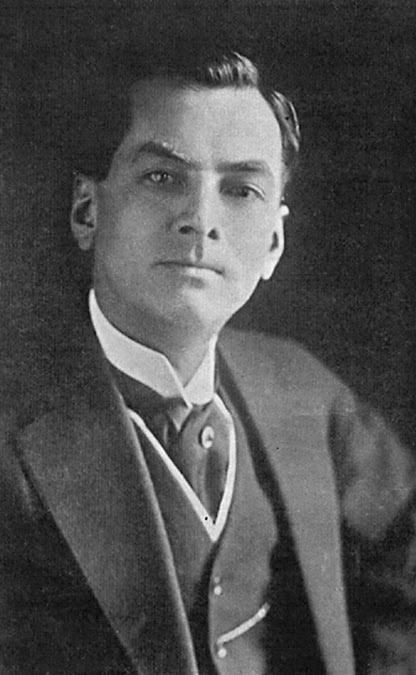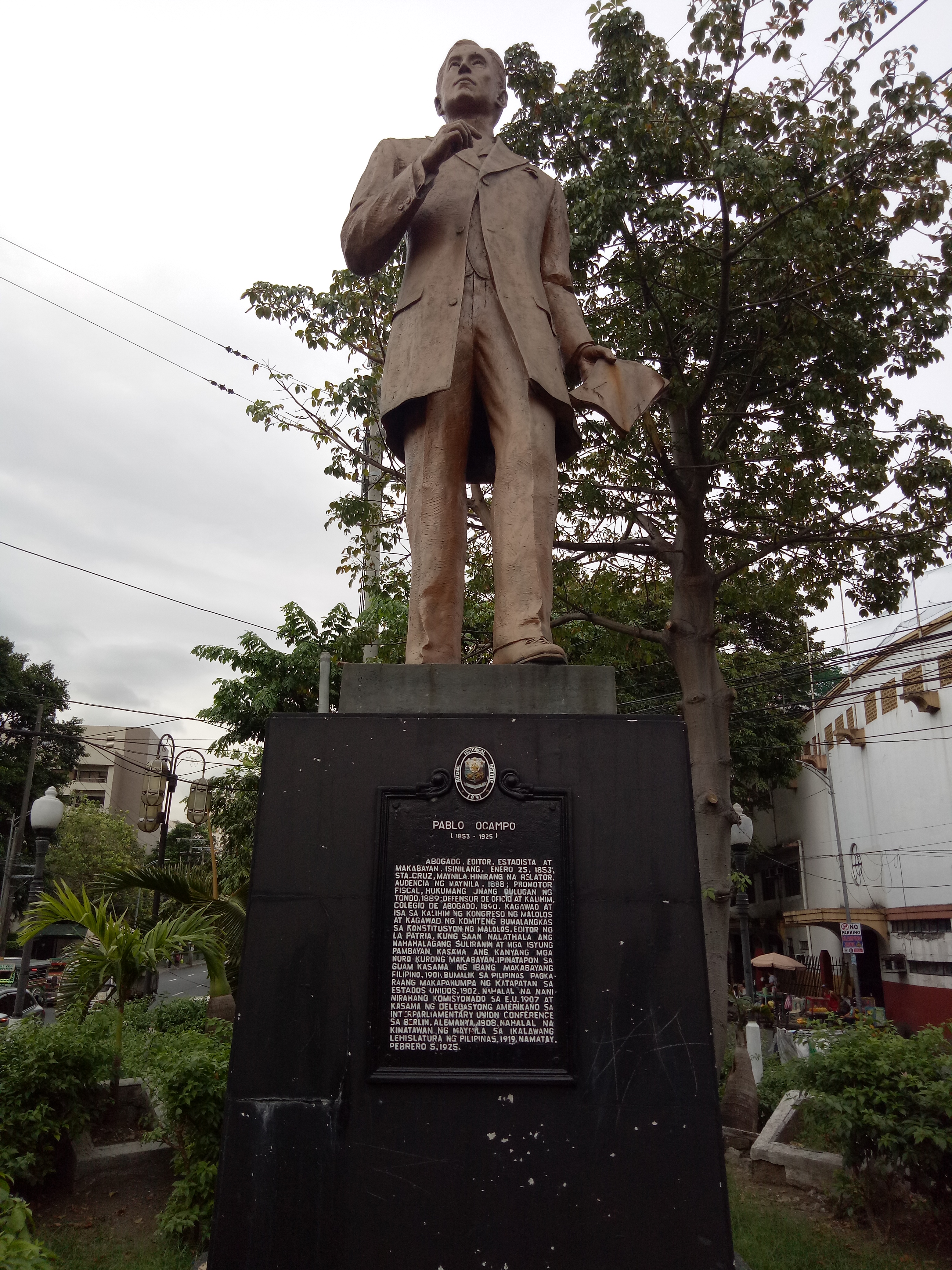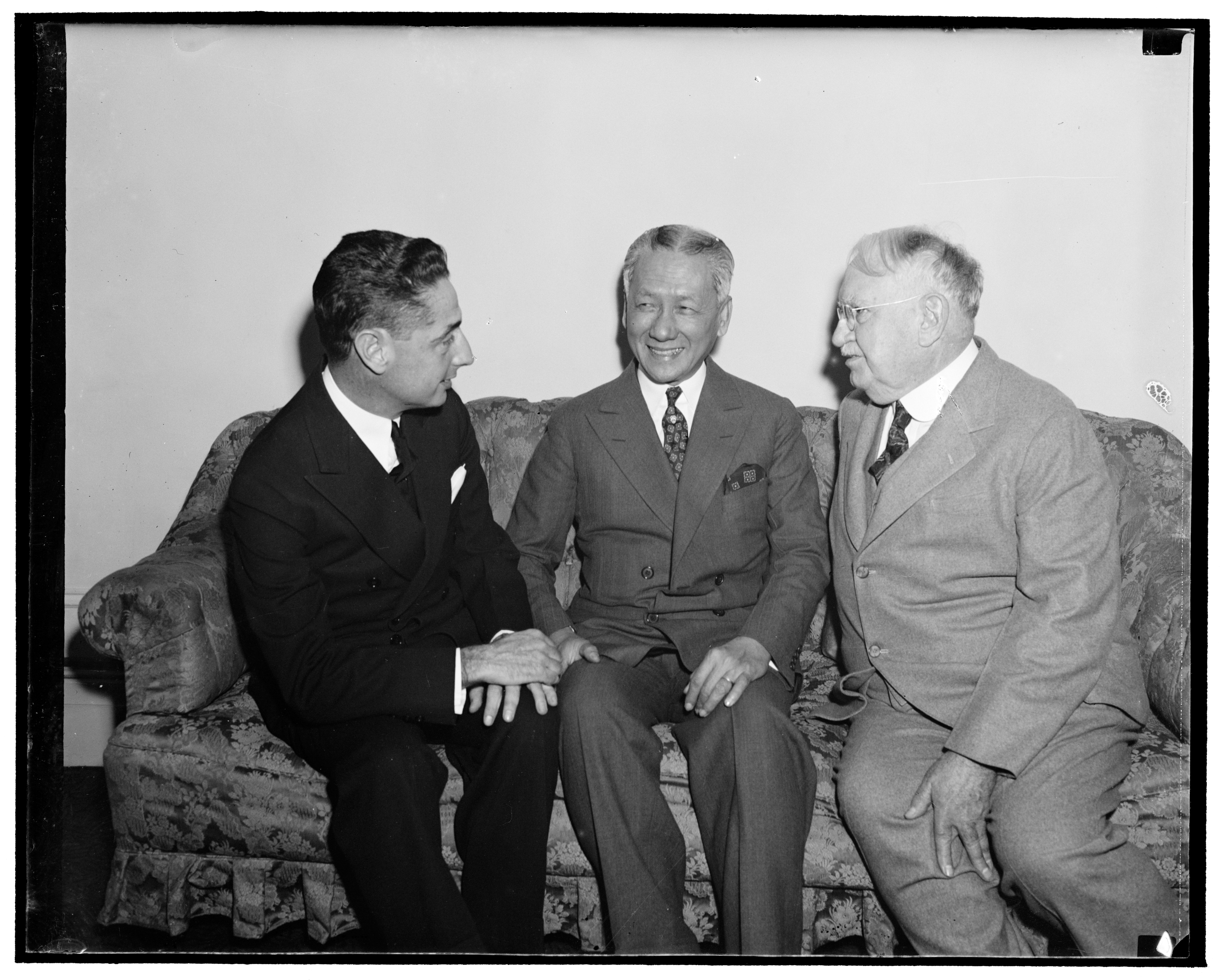|
Manuel L. Quezon
Manuel Luis Quezon y Molina, (; 19 August 1878 – 1 August 1944), also known by his initials MLQ, was a Filipino people, Filipino lawyer, statesman, soldier and politician who served as president of the Commonwealth of the Philippines from 1935 until his death in 1944. He was the first Filipino to head a government of the entire Philippines (as opposed to the government of previous Philippine states), and is considered to have been the second president of the Philippines, after Emilio Aguinaldo (1899–1901), whom Quezon defeated in the 1935 Philippine presidential election, 1935 presidential election. During his presidency, Quezon tackled the problem of landless peasants in the countryside. His other major decisions include the reorganization of the islands' military defense, approval of a recommendation for government reorganization, the promotion of settlement and development in Mindanao, dealing with the foreign stranglehold on Philippine trade and commerce, proposals for ... [...More Info...] [...Related Items...] OR: [Wikipedia] [Google] [Baidu] |
Excellency
Excellency is an honorific style given to certain high-level officers of a sovereign state, officials of an international organization, or members of an aristocracy. Once entitled to the title "Excellency", the holder usually retains the right to that courtesy throughout their lifetime, although in some cases the title is attached to a particular office, and is held only for the duration of that office. Generally people addressed as ''Excellency'' are heads of state, heads of government, governors, ambassadors, Roman Catholic bishops and high-ranking ecclesiastics and others holding equivalent rank (e.g., heads of international organizations). Members of royal families generally have distinct addresses ( Majesty, Highness, etc.) It is sometimes misinterpreted as a title of office in itself, but in fact is an honorific that precedes various titles (such as Mr. President, and so on), both in speech and in writing. In reference to such an official, it takes the form ''Hi ... [...More Info...] [...Related Items...] OR: [Wikipedia] [Google] [Baidu] |
Speaker Of The Philippine House Of Representatives
The speaker of the House of Representatives of the Philippines ( fil, Ispiker ng Kapulungan ng mga Kinatawan ng Pilipinas), more popularly known as the House speaker, is the presiding officer and the highest-ranking official of the lower house of Congress, the House of Representatives, as well as the fourth-highest official of the government of the Philippines. The speaker is elected by a majority of all of the representatives from among themselves. The speaker is the third and last in the line of succession to the presidency, after the vice president and the Senate president. A speaker may be removed from office in a coup, or can be replaced by death or resignation. In some cases, a speaker may be compelled to resign at the middle of a Congress' session after he has lost support of the majority of congressmen; in that case, an election for a new speaker is held. Despite being a partisan official, the speaker (or whoever is presiding) does not vote unless in breaking ties in a ... [...More Info...] [...Related Items...] OR: [Wikipedia] [Google] [Baidu] |
Majority Floor Leader Of The House Of Representatives Of The Philippines
The Majority Floor Leader of the House of Representatives of the Philippines, or simply the House Majority Floor Leader, is the leader elected by the majority bloc of the House of Representatives of the Philippines The House of Representatives of the Philippines ( fil, Kapulungan ng mga Kinatawan ng Pilipinas, italic=unset, ''Kamara'' or ''Kamara de Representantes'' from the Spanish word ''cámara'', meaning "chamber") is the lower house of Congress, the ... that serves as their official leader in the body. He also manages the business of the majority part in the House of Representatives. By tradition, the Speaker or any Presiding Officer gives the Majority leader priority in obtaining the floor and also, he is the traditional Chairman of the Committee on Rules. List of majority floor leaders See also * Minority Floor Leader of the House of Representatives of the Philippines External links House of Representatives of the Philippines References * {{Philippine House ... [...More Info...] [...Related Items...] OR: [Wikipedia] [Google] [Baidu] |
Manuel Earnshaw
Manuel Noguera Earnshaw (November 19, 1862 – February 13, 1936) was a Resident Commissioner of the Philippines from 1913 to 1917. Early life and education He was born in Cavite, in then Captaincy General of the Philippines, on November 19, 1862. He attended the Ateneo de Manila University, Ateneo Municipal de Manila and Philippine Merchant Marine Academy, Escuela Nautica de Manila. Early career He became engaged in engineering and in the drydocking business in 1884. He was the founder, president, and general manager of the Earnshaw Slipways & Engineering Co. Resident Commissioner He was elected, as an Independent candidate, as Resident Commissioner from the Philippines and served from March 4, 1913, to March 3, 1917. He was not a candidate for renomination in 1916. He discontinued his former business pursuits in 1921 and lived in retirement in Cavite. Death He died in Manila, in then Commonwealth of the Philippines, February 13, 1936, and was buried in Manila North Cemetery. ... [...More Info...] [...Related Items...] OR: [Wikipedia] [Google] [Baidu] |
Benito Legarda
Benito Cosme Legarda y Tuason (September 27, 1853 – August 27, 1915) was a Filipino legislator who was a member of the Philippine Commission of the American colonial Insular Government, the government's legislature, and later a Resident Commissioner from the Philippine Islands to the United States Congress. Early life and education He was born in Manila, Philippines on September 27, 1853 to a Spanish-Filipino mestizo family. He attended the Jesuits' College and the University of Santo Tomas of Manila. Political life He started his political life as a member of President Emilio Aguinaldo's cabinet at Malolos and vice president of the Filipino Congress. He later became a member of the Philippine Commission in 1901 and was elected as a Resident Commissioner to the Sixtieth and to the two succeeding Congresses (November 22, 1907 - March 3, 1912). He was not a candidate for renomination to the Sixty-third Congress in 1912, in large part due to opposition to his candidacy from t ... [...More Info...] [...Related Items...] OR: [Wikipedia] [Google] [Baidu] |
Teodoro R
The name ''Teodoro'' is the Italian, Portuguese and Spanish form of Theodore. People Given name * Teodoro Alcalde (1913–1995) * Teodoro Ardemans (died 1726) * Teodoro Borlongan (1955–2005) * Teodoro Buontempo (1946–2013) * Teodoro Cano García (born 1932) * Teodoro Celli (1917–1989), music critic * (born 1996), actor * Teodoro Correr (1750–1830) * Teodoro Cottrau (1827–1879) * Teodoro Cuñado (born 1970) * Teodoro de Croix (1730–1792) * Teodoro Fernandes Sampaio (1855–1937), Brazilian engineer, geographer and historiographer * Teodoro Fernández (1913–1996) * Teodoro García Simental (born 1974) * Teodoro Ghisi (1536–1601) * Teodoro Goliardi (born 1927) * Teodoro Kalaw (1884–1940) * Teodoro Kalaw (sport shooter) * Teodoro Lechi (1778–1866) * Teodoro Locsin Jr. (born 1948) * Teodoro Lonfernini (born 1976) * Teodoro Maniaci * Teodoro Matos Santana (1946–2013) * Teodoro Mauri (1904–1960) * Teodoro Moscoso (1932–1992) * Teodoro Obiang Nguema M ... [...More Info...] [...Related Items...] OR: [Wikipedia] [Google] [Baidu] |
Pablo Ocampo
Pablo de Leon Ocampo (born Pablo Ocampo y de León; January 25, 1853 – February 5, 1925) was a Filipino lawyer, nationalist, a member of the Malolos Congress, inaugural holder of the office of Resident Commissioner from the Philippine Islands to the United States Congress alongside Benito Legarda and a member of the 2nd Philippine Legislature. He gave his service to his country and helped to bring about the peaceful transition of the Philippines from being a colony of Spain for more than 300 years (1565 to 1898) to what will later become the American Commonwealth of the Philippines. Early life and education Ocampo was born in Quiapo, Manila, Spanish Philippines on January 25, 1853. His father was Andres Ocampo, a gobernadorcillo of Santa Cruz, Manila in the Spanish period, while his mother was Macaria de Leon. Ocampo spent his secondary school years in the Colegio de San Juan de Letran and went on to take up law at the University of Santo Tomas. He finished his degree in Mar ... [...More Info...] [...Related Items...] OR: [Wikipedia] [Google] [Baidu] |
Resident Commissioners From The Philippines
The resident commissioner of the Philippines () was a non-voting member of the United States House of Representatives sent by the Philippines from 1907 until its internationally recognized independence in 1946. It was similar to current non-voting members of Congress such as the resident commissioner of Puerto Rico and delegates from Washington, D.C., Guam, the Northern Mariana Islands and other territories of the United States. Like current non-voting members, resident commissioners could speak and otherwise participate in the business of the House, but did not have full voting rights. Two resident commissioners were sent until 1937, when after the establishment of the Commonwealth of the Philippines, the number was changed to one. History The Philippines was a United States territory from 13 August 1898 until Philippine independence was internationally recognized on 4 July 1946. The office was first created by the Philippine Organic Act of 1902, section 8 and re-authoriz ... [...More Info...] [...Related Items...] OR: [Wikipedia] [Google] [Baidu] |
Claro M
Claro or CLARO may refer to: Companies * Claro (company) or Claro Americanas, a mobile and fixed voice and data communications company ** Claro Argentina, Paraguay and Uruguay ** Claro Brasil ** Claro Colombia **Claro El Salvador **Claro Guatemala **Claro Jamaica ** Claro Puerto Rico **Claro (Dominican Republic) * Claro fair trade, a sustainable company established by EvB and based in Switzerland * Claro TV, a Latin American operator of Pay television Places * Claro, Switzerland, a place in the canton of Ticino * Claro Wapentake, the former district of Yorkshire Other uses *Clarion (instrument), a medieval brass instrument also called Claro * CLARO (political party), a political party in Orihuela, Spain * Claro (surname), a surname (includes a list) * Claro TV, a Latin American pay television operator *Claro, a light-colored cigar wrapper *The wood of the ''Juglans hindsii'', sometimes called claro walnut See also * Claros, an ancient Greek sanctuary on the coast of Ionia, Gree ... [...More Info...] [...Related Items...] OR: [Wikipedia] [Google] [Baidu] |
Antero Soriano
Antero Sosa Soriano (January 3, 1888 – June 15, 1929) was a Filipino congressman, senator, and governor of Cavite from Tanza, Cavite. Early life Antero Soriano was born in Tanza, province of Cavite to Adriano Soriano and Aurea Sosa on January 3, 1886. He studied in Liceo de Manila, graduating and receiving his degree of Bachelor of Arts in 1904. He studied law in the famous Escuela de Derecho (now Manila Law College Foundation) in Manila until September 1907, when he presented himself for examination with one hundred other students before an examining tribunal nominated by the Supreme Court of the Philippines. Only five applicants passed and Soriano was one of them. He started practicing law immediately. He then became the lawyer of the Manila Railroad Company. Political career In June 1912, Soriano was elected governor of the province of Cavite at the age of 26. He was then re-elected in 1916. He was elected senator from the 5th District for two terms in 1919 and in 1922 ... [...More Info...] [...Related Items...] OR: [Wikipedia] [Google] [Baidu] |
Philippines's 5th Senatorial District
Philippines's 5th senatorial district, officially the Fifth Senatorial District of the Philippine Islands ( es, Quinto Distrito Senatorial de las Islas Filipinas), was one of the twelve senatorial districts of the Philippines in existence between 1916 and 1935. It elected two members to the Senate of the Philippines, the upper chamber of the bicameral Philippine Legislature under the Insular Government of the Philippine Islands for each of the 4th to 10th legislatures. The district was created under the 1916 Jones Law from the southern Luzon provinces of Batangas, Cavite, Mindoro and Tayabas. Marinduque was added in 1920 upon its re-establishment as a regular province separate from Tayabas. The district was represented by a total of five senators throughout its existence. It was abolished in 1935 when a unicameral National Assembly was installed under a new constitution following the passage of the Tydings–McDuffie Act which established the Commonwealth of the Philippines. Si ... [...More Info...] [...Related Items...] OR: [Wikipedia] [Google] [Baidu] |
Senator Of The Philippines
The Senate of the Philippines ( Filipino: ''Senado ng Pilipinas'', also ''Mataas na Kapulungan ng Pilipinas'' or "upper chamber") is the upper house of Congress of the bicameral legislature of the Philippines with the House of Representatives as the lower house. The Senate is composed of 24 senators who are elected at-large (the country forms one district in its elections) under plurality-at-large voting. Senators serve six-year terms with a maximum of two consecutive terms, with half of the senators elected in staggered elections every three years. When the Senate was restored by the 1987 Constitution, the 24 senators who were elected in 1987 served until 1992. In 1992 the 12 candidates for the Senate obtaining the highest number of votes served until 1998, while the next 12 served until 1995. Thereafter, each senator elected serves the full six years. From 1945 to 1972, the Senate was a continuing body, with only eight seats up every two years. Aside from having its concurr ... [...More Info...] [...Related Items...] OR: [Wikipedia] [Google] [Baidu] |





